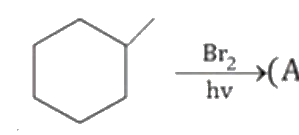The following electronic transition occurs when lithium atoms are sprayed into a hot flame,
2sI−−→2pII−−→3dIII−−→3pIV−−→4sV−−→3p.
Which of the transition would result in the emission of light?
I, II and IV
III and V
III, IV and V
All of these steps
The correct Answer is:B
To determine which electronic transitions in lithium atoms result in the emission of light, we need to analyze the transitions based on energy levels. The transitions are as follows:
1. Transition I: 2s → 2p
2. Transition II: 2p → 3d
3. Transition III: 3d → 3p
4. Transition IV: 3p → 4s
5. Transition V: 4s → 3p
Step 1: Identify the nature of transitions.
- Emission of light occurs when an electron transitions from a higher energy level to a lower energy level.
Step 2: Analyze each transition.
- Transition I (2s → 2p): This is from a lower energy level (2s) to a higher energy level (2p). No emission occurs.
- Transition II (2p → 3d): This is also from a lower energy level (2p) to a higher energy level (3d). No emission occurs.
- Transition III (3d → 3p): This is from a higher energy level (3d) to a lower energy level (3p). Emission occurs.
- Transition IV (3p → 4s): This is from a lower energy level (3p) to a higher energy level (4s). No emission occurs.
- Transition V (4s → 3p): This is from a higher energy level (4s) to a lower energy level (3p). Emission occurs.
Step 3: Conclusion.
- The transitions that result in the emission of light are Transition III (3d → 3p) and Transition V (4s → 3p).
Final Answer:
The transitions that result in the emission of light are Transition III and Transition V.
2. Transition II: 2p → 3d
3. Transition III: 3d → 3p
4. Transition IV: 3p → 4s
5. Transition V: 4s → 3p
- Emission of light occurs when an electron transitions from a higher energy level to a lower energy level.
- Transition I (2s → 2p): This is from a lower energy level (2s) to a higher energy level (2p). No emission occurs.
- Transition II (2p → 3d): This is also from a lower energy level (2p) to a higher energy level (3d). No emission occurs.
- Transition III (3d → 3p): This is from a higher energy level (3d) to a lower energy level (3p). Emission occurs.
- Transition IV (3p → 4s): This is from a lower energy level (3p) to a higher energy level (4s). No emission occurs.
- Transition V (4s → 3p): This is from a higher energy level (4s) to a lower energy level (3p). Emission occurs.
- The transitions that result in the emission of light are Transition III (3d → 3p) and Transition V (4s → 3p).
The transitions that result in the emission of light are Transition III and Transition V.
Similar Questions
what is the angle between (→P+→Q) and (→P+→Q)?
View SolutionProjection of →P on →Q is :
View SolutionCHCl3+MeCOMeOH−−−→Aexcess KOH−−−−−−→BNaOH−CaO−−−−−−−→CKOBr−−→D
View SolutionCH3CH=CH2NBS−−→AKCN−−→BOH−/Δ−−−−−→CP/Br2−−−→DNH3−−→EΔ−−→F
View SolutionACl2−−→BAgCN−−−→C[H]−−→(CH3)2 NH Reactant [ A ] is :
View SolutionSOCl2−−−→(A)KCN−−→(B)H+−−→(C ), the compound (C ) is
 View Solution
View SolutionCH3−O∣∣C−OHNH3−−→(P)Al2O3−−−→(Q)Br2/KOH−−−−−−→(R). R is
View SolutionAt what angle the two force →A+→B and →A−→B act so that their resultant is √3A2+B2 ?
View Solution Br2−−→hv(A)alc. KOH−−−−→(B)OsO4−−→(C)HlO4−−→(D), Identify 'D'View Solution
Br2−−→hv(A)alc. KOH−−−−→(B)OsO4−−→(C)HlO4−−→(D), Identify 'D'View SolutionC2H5OHPCl5−−→(A)KCN−−→(B)H3O+−−−→(C)NH3−−→(D)heat−−→(E)
Identify the productsView Solution

